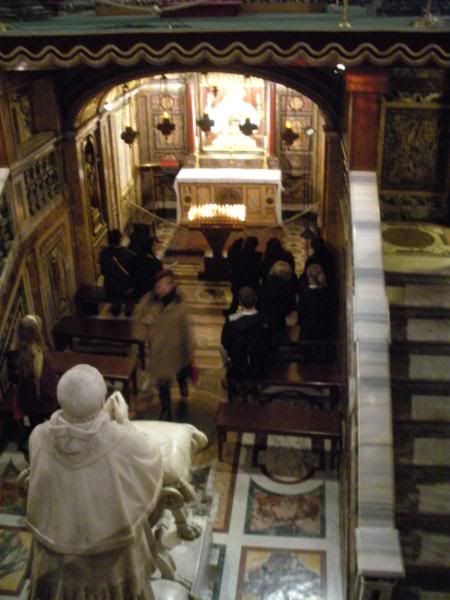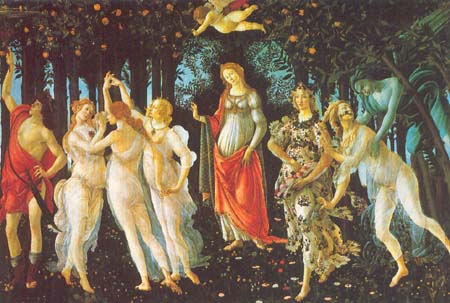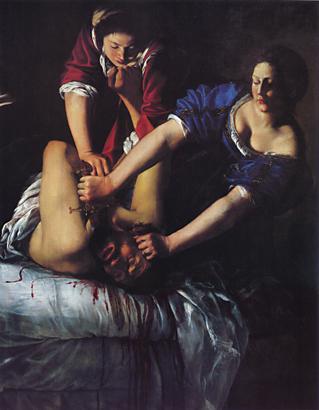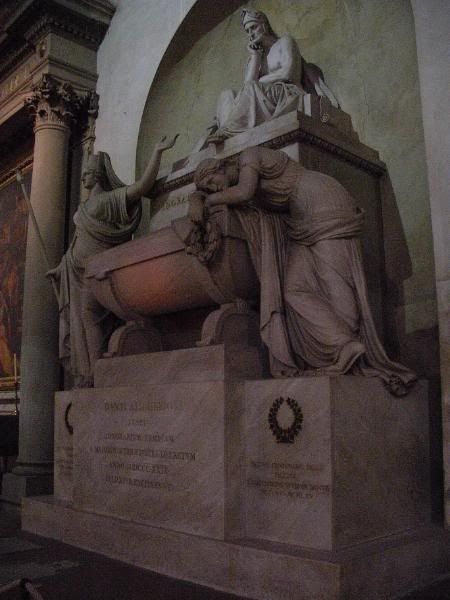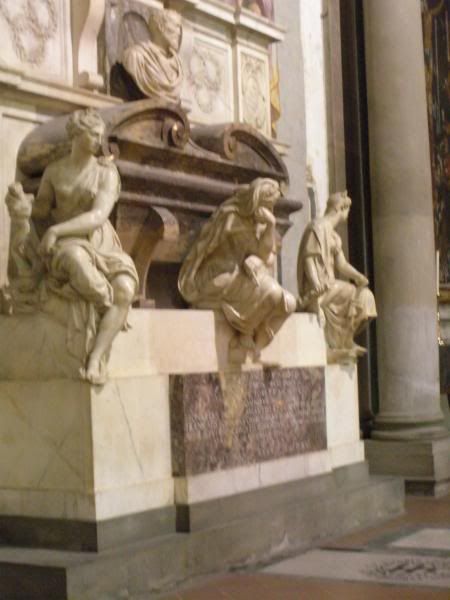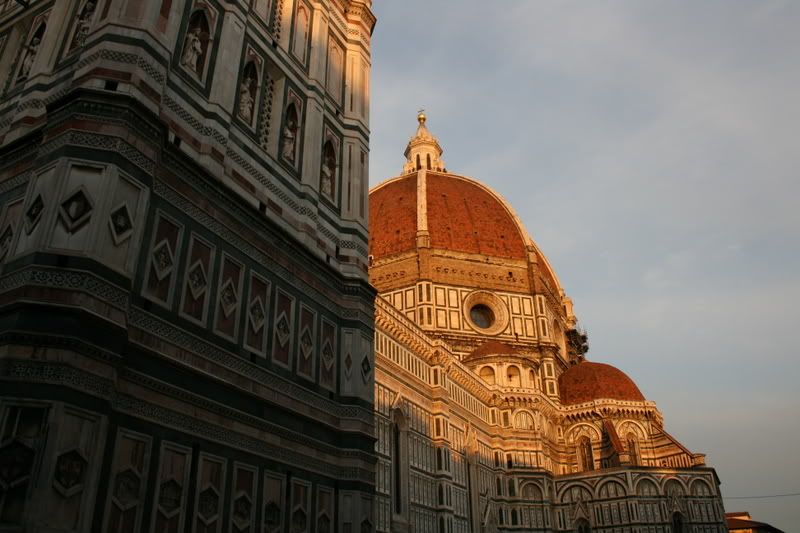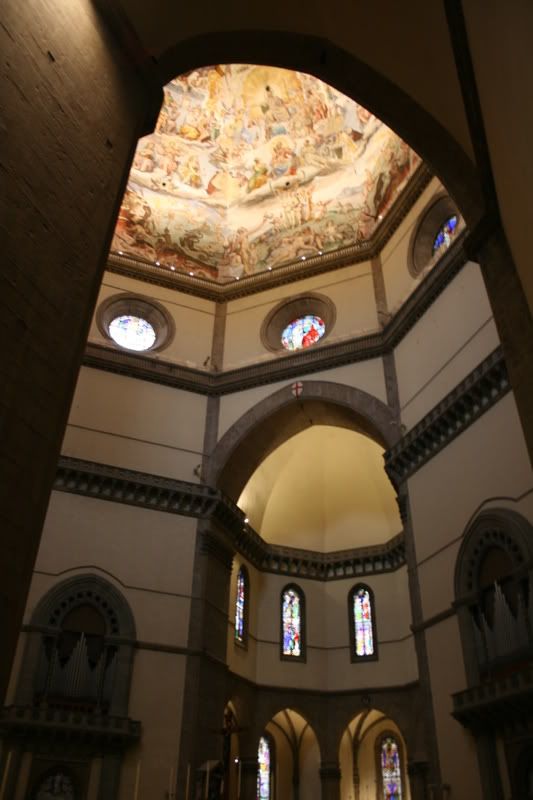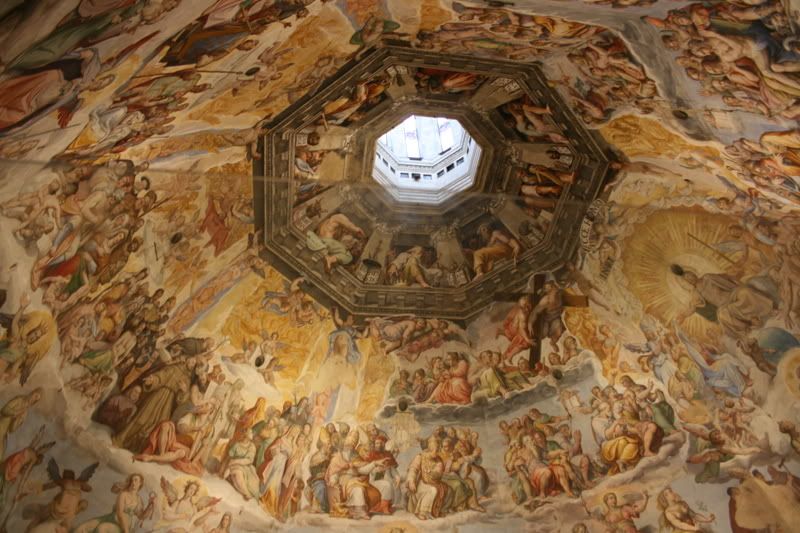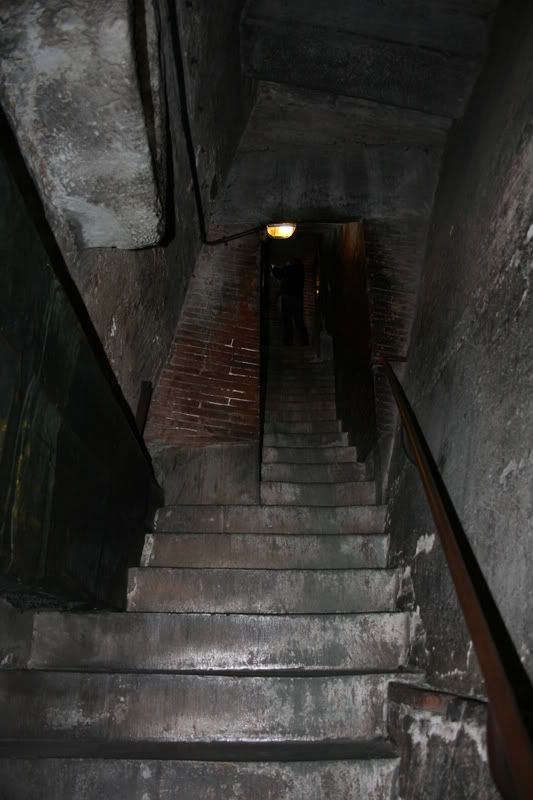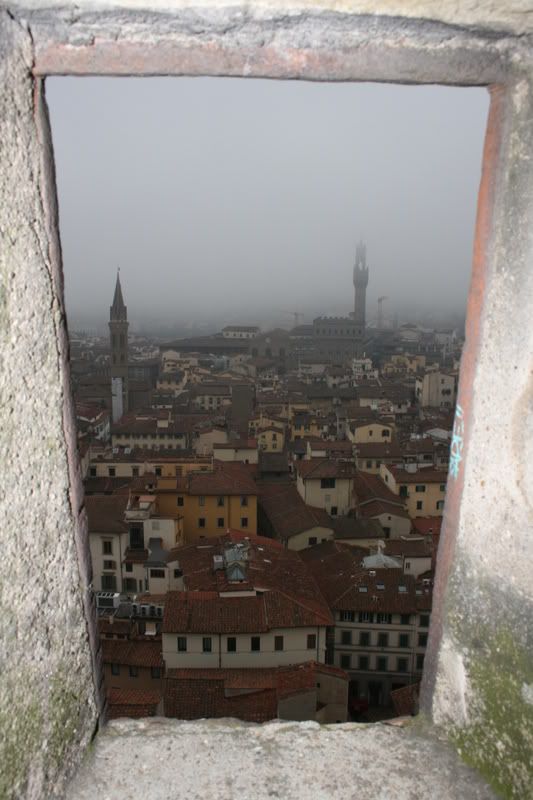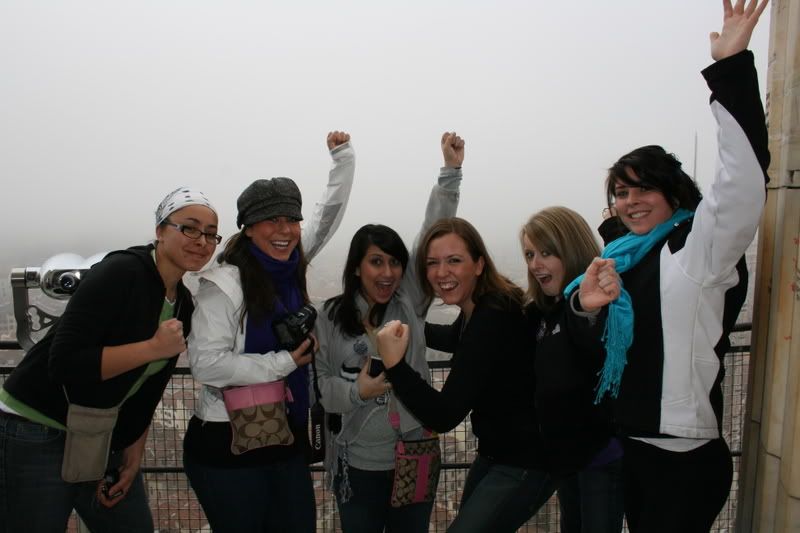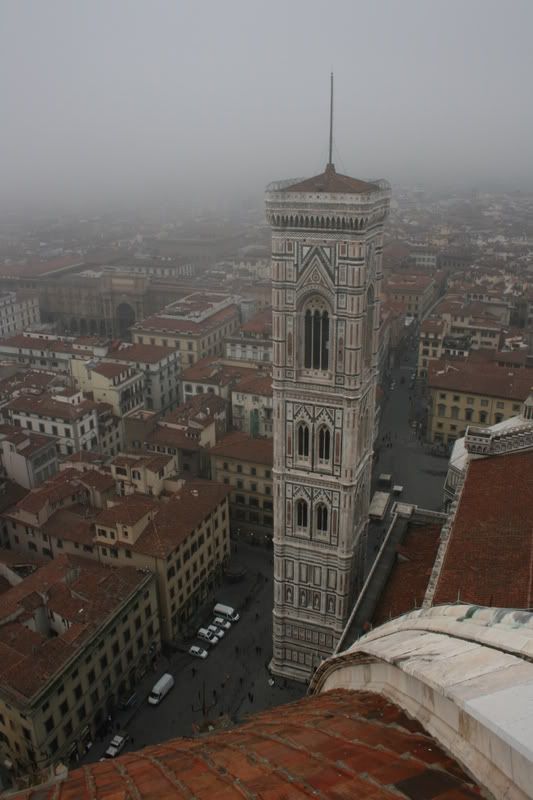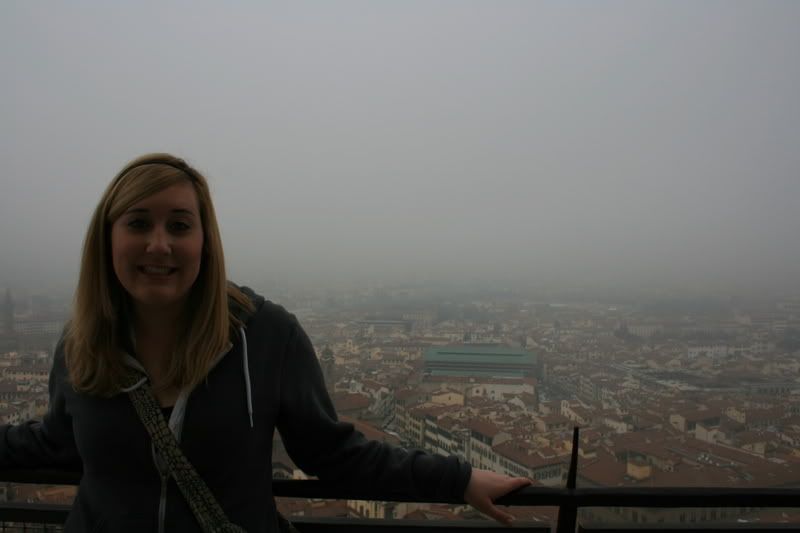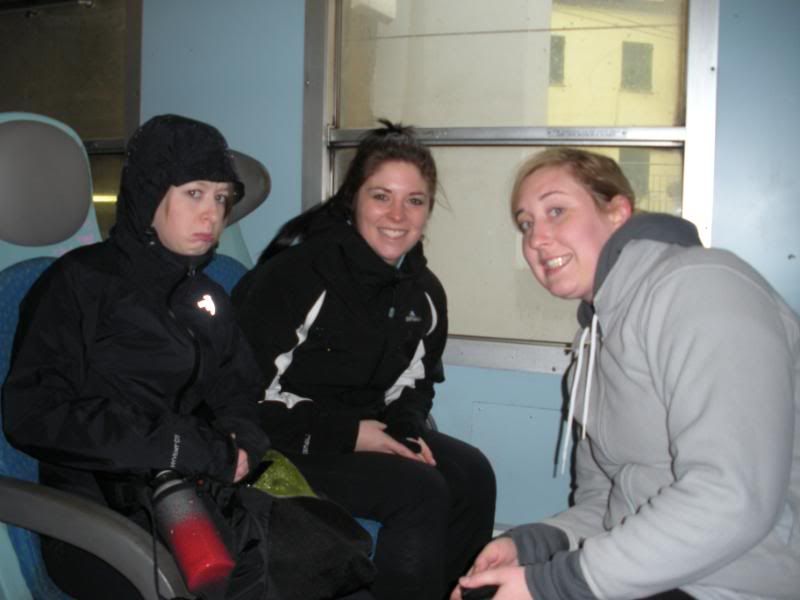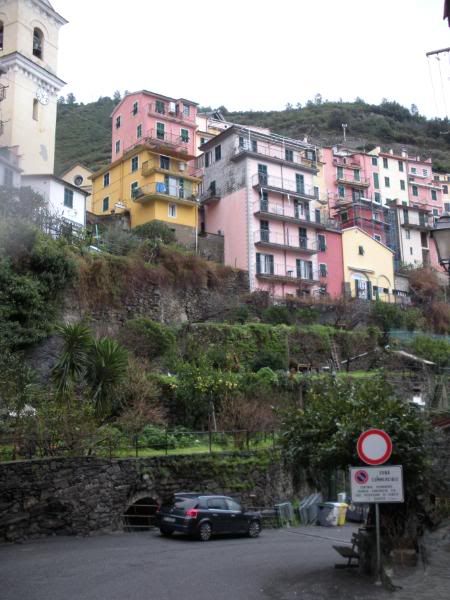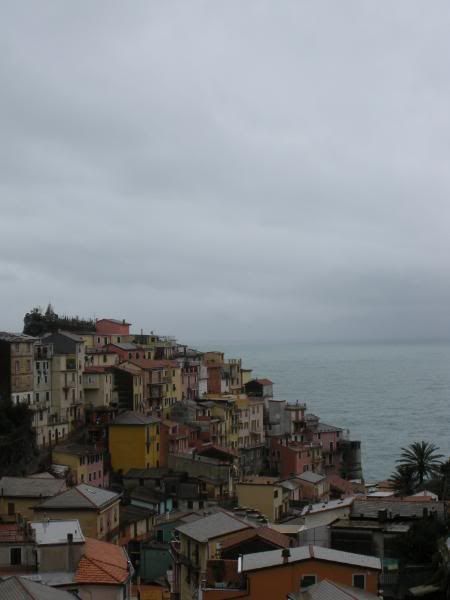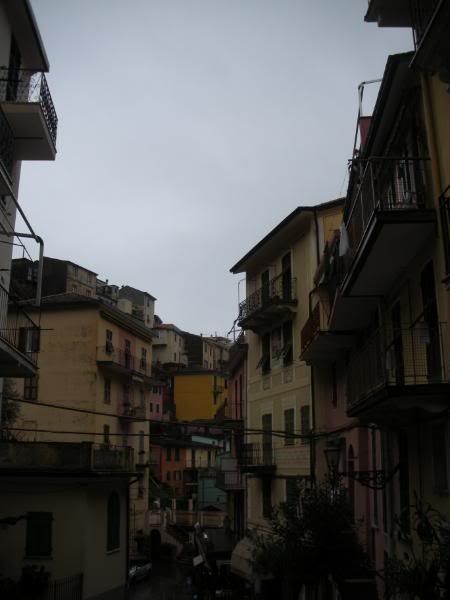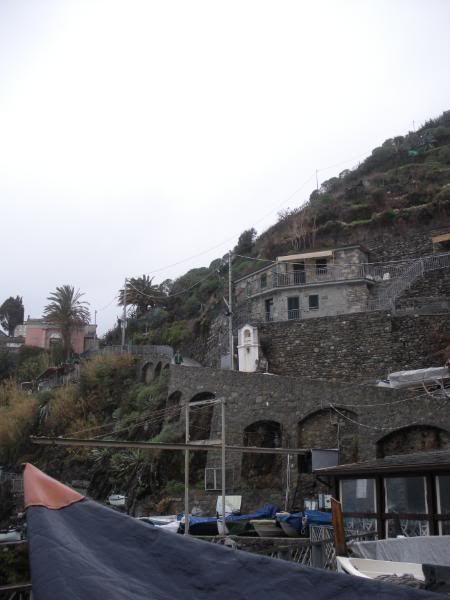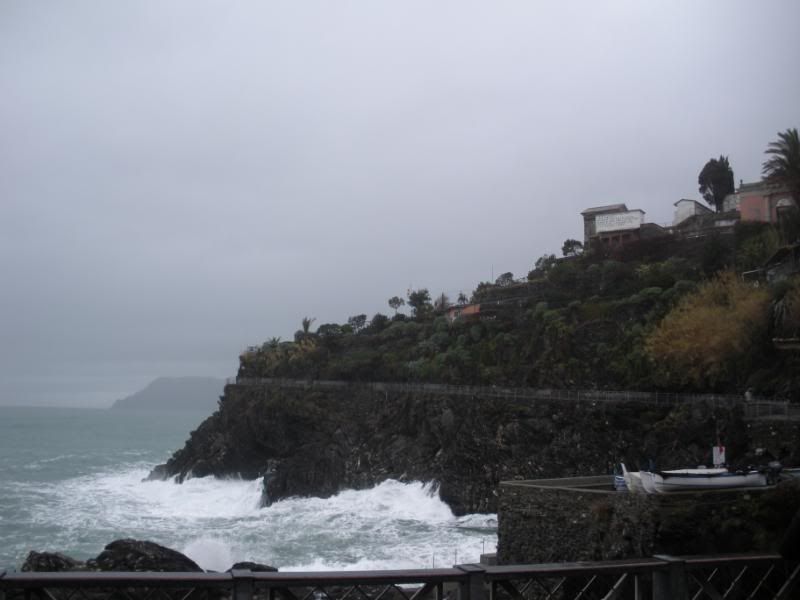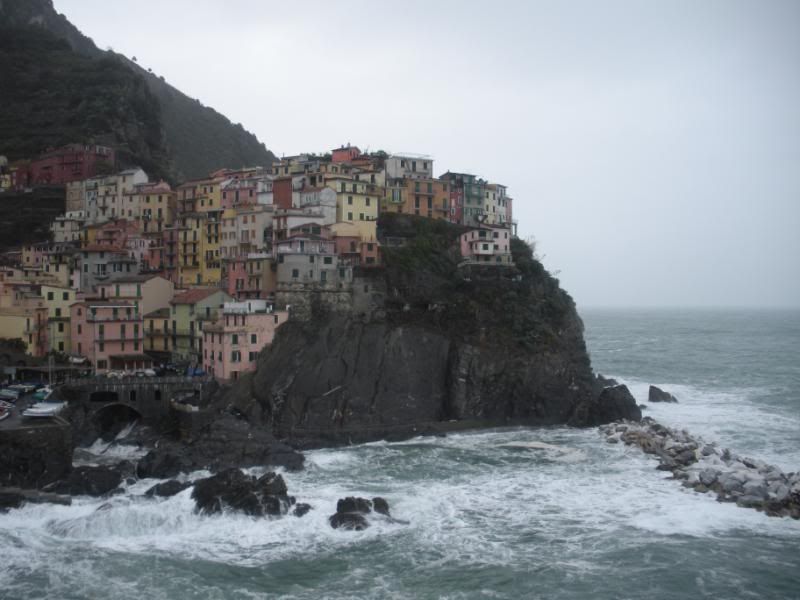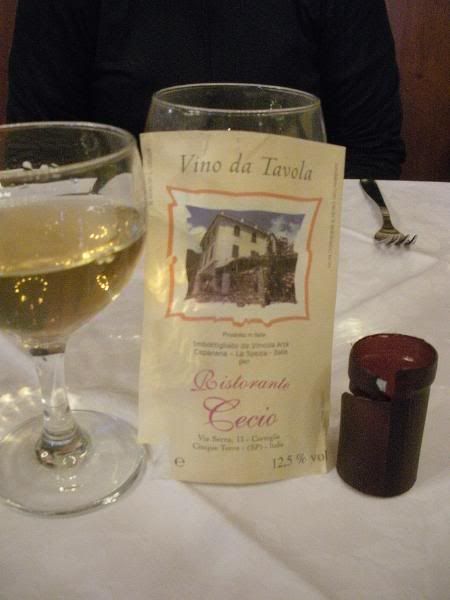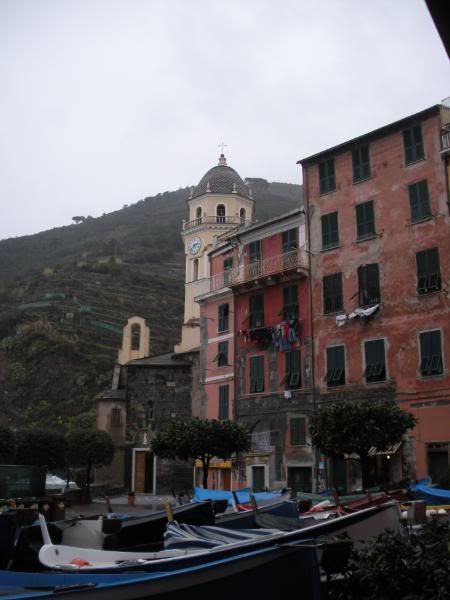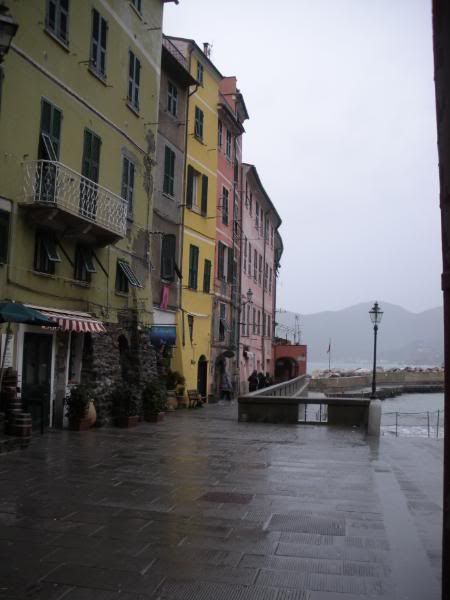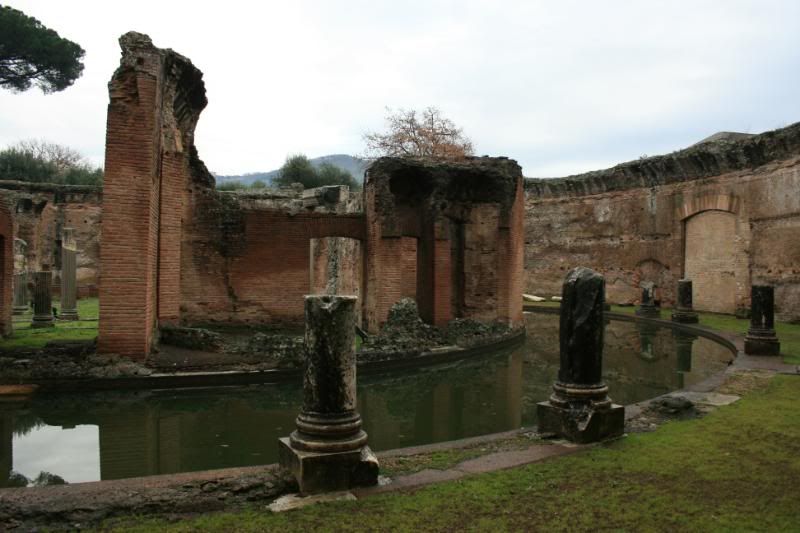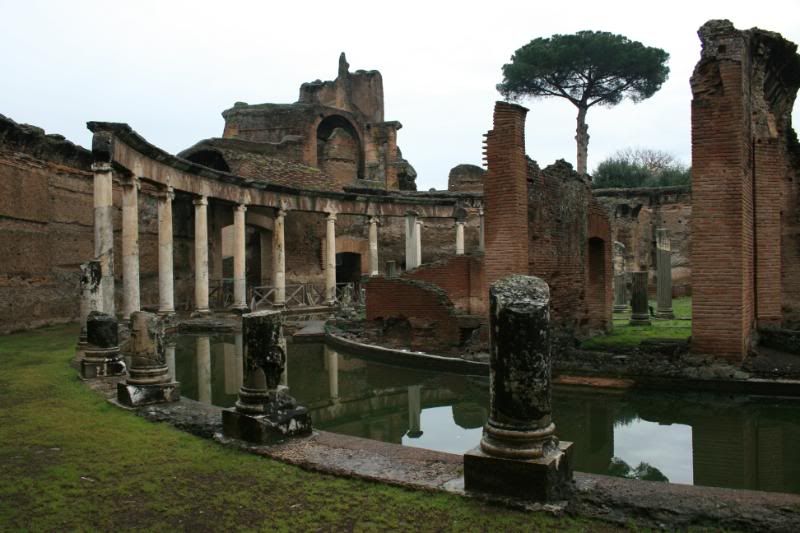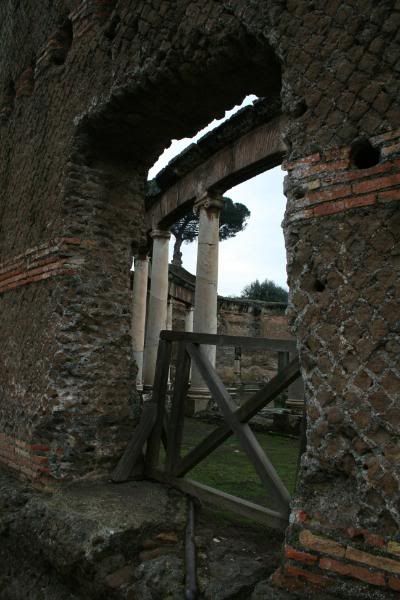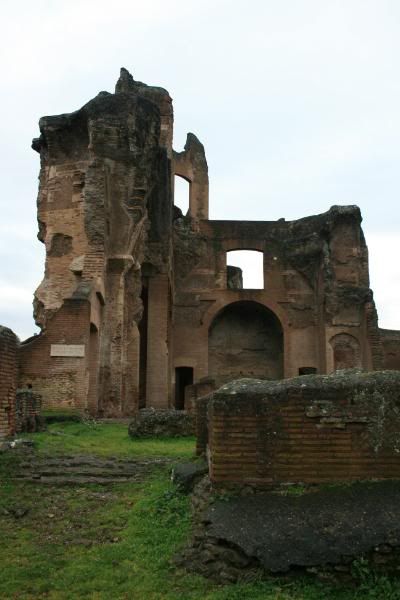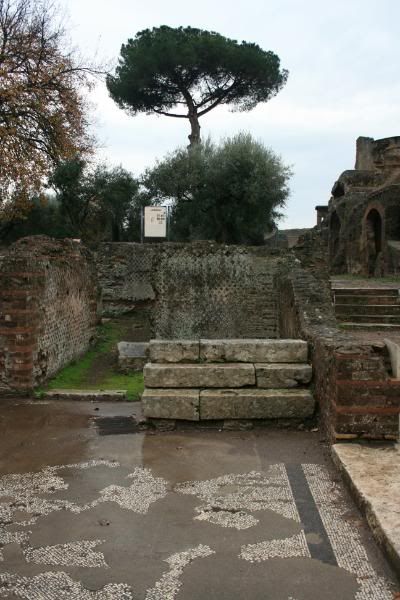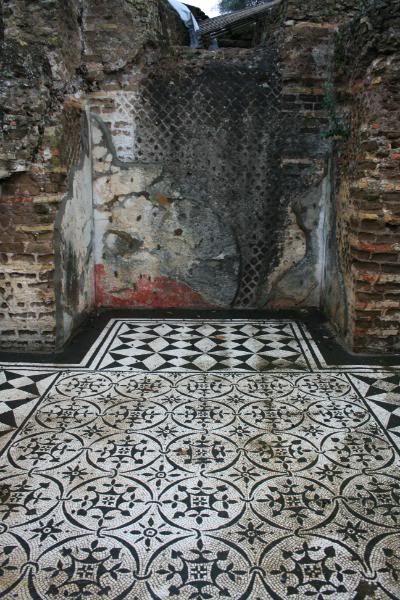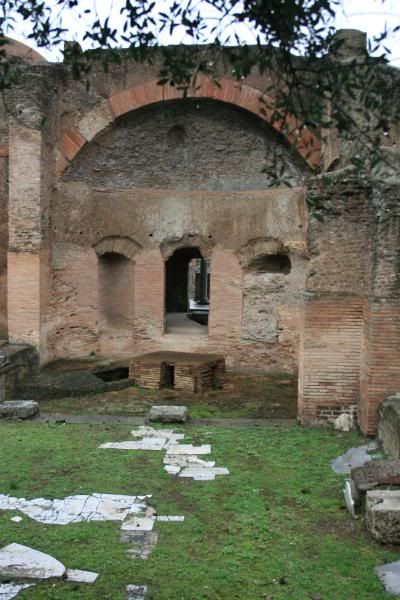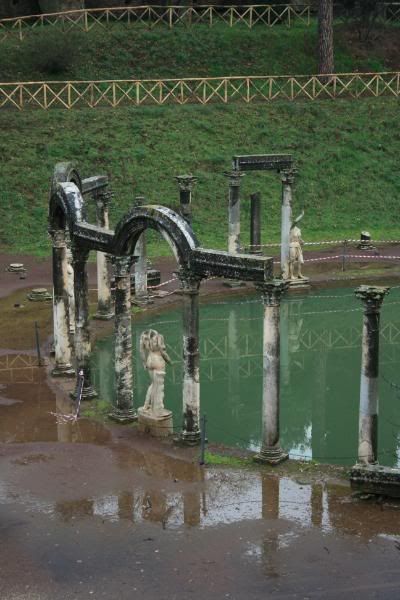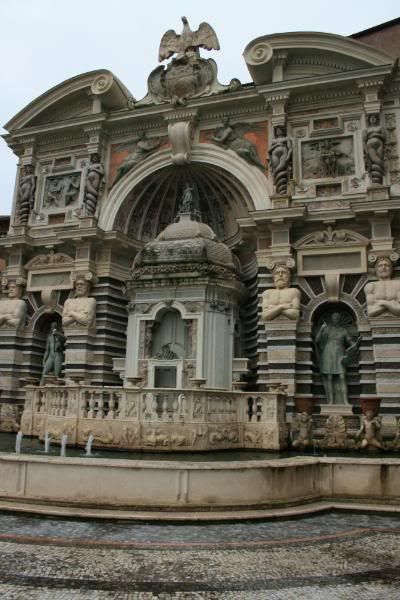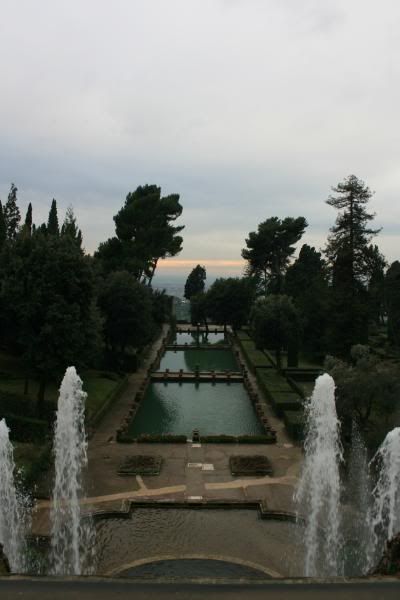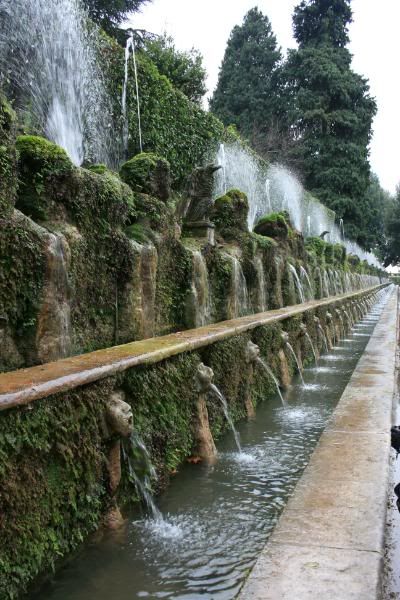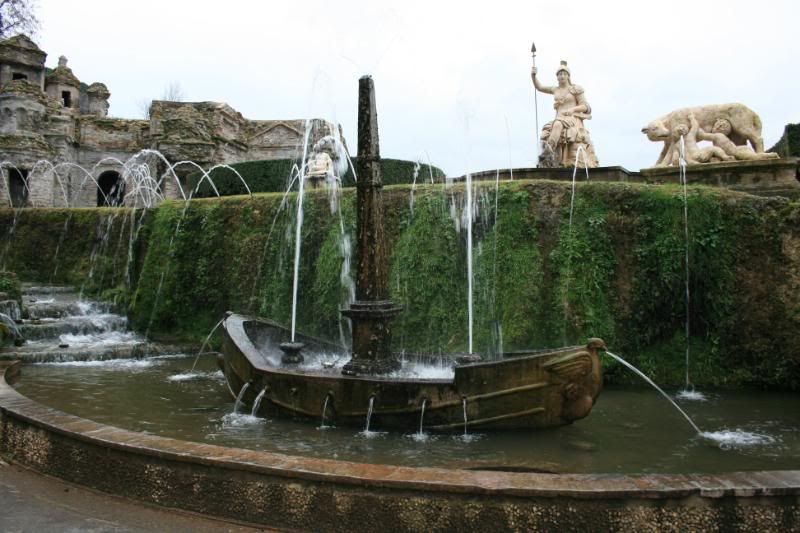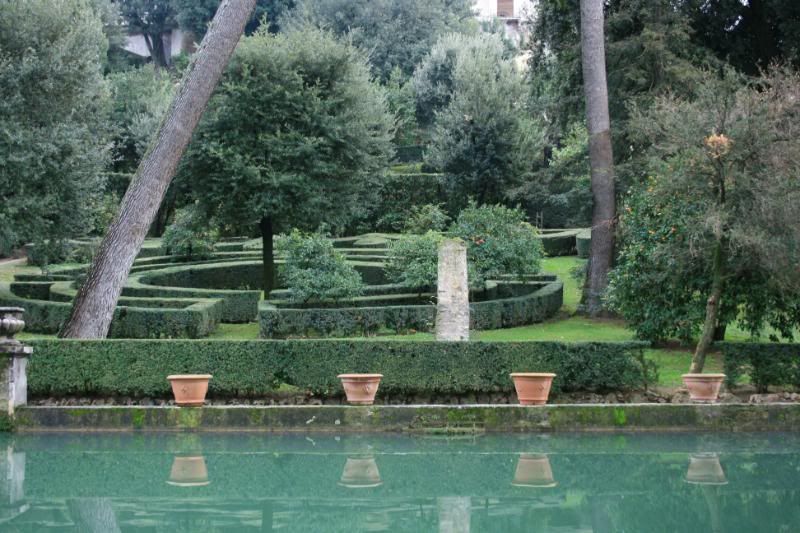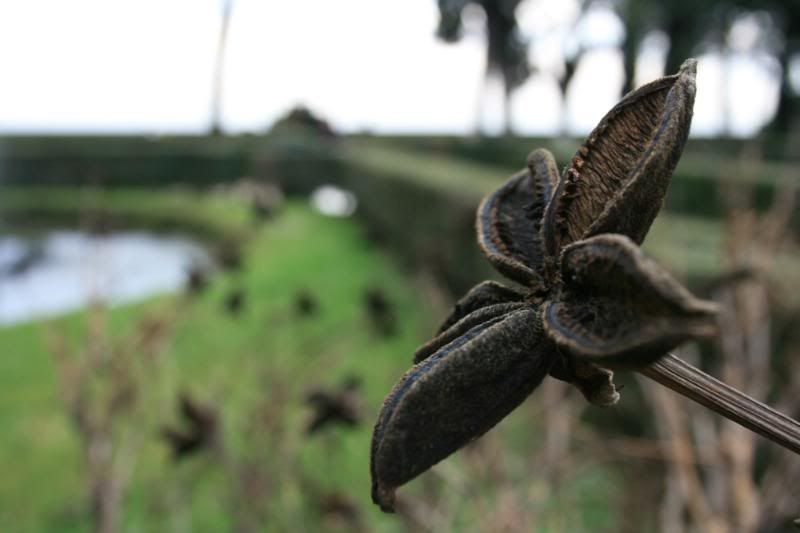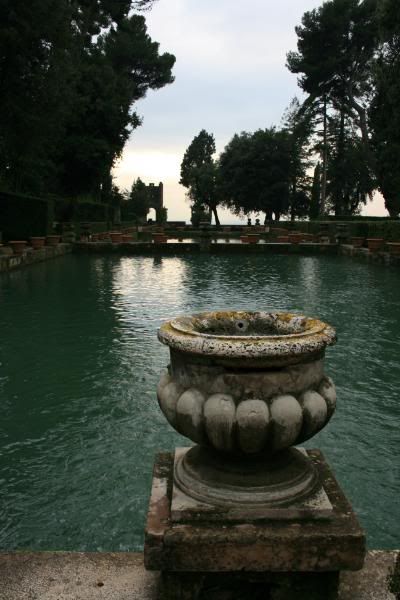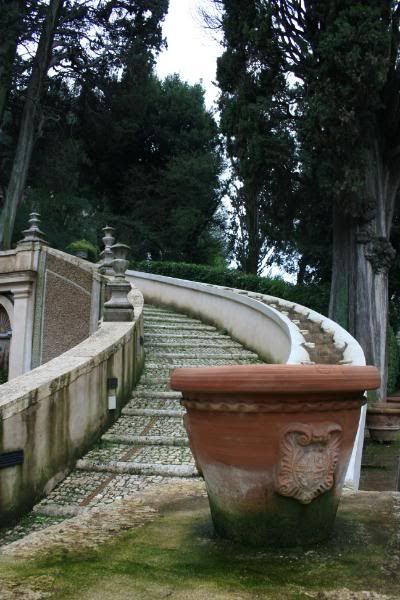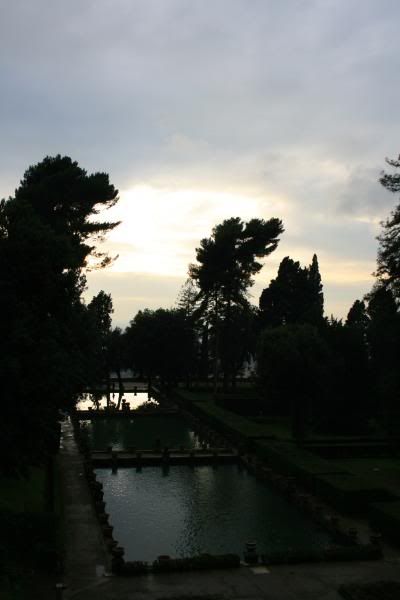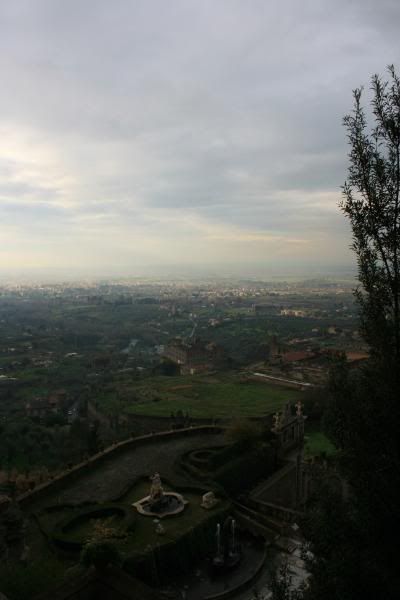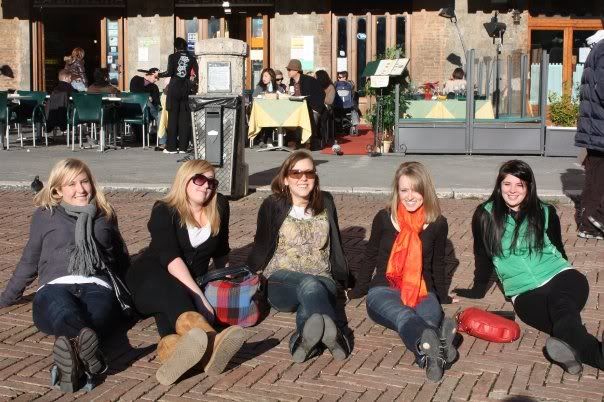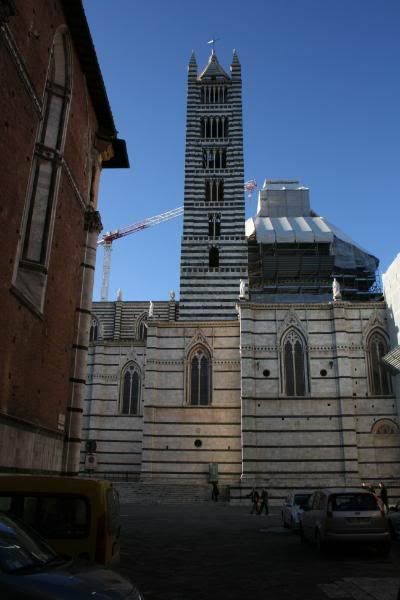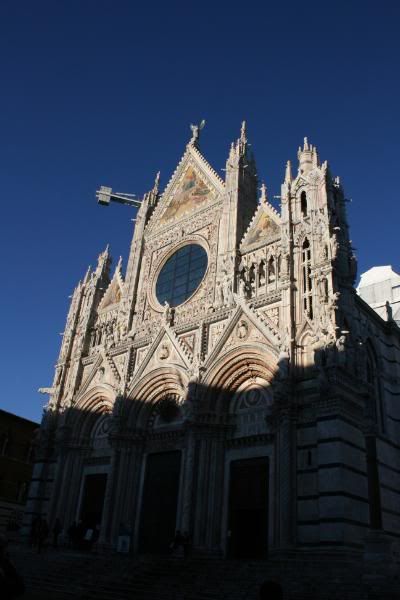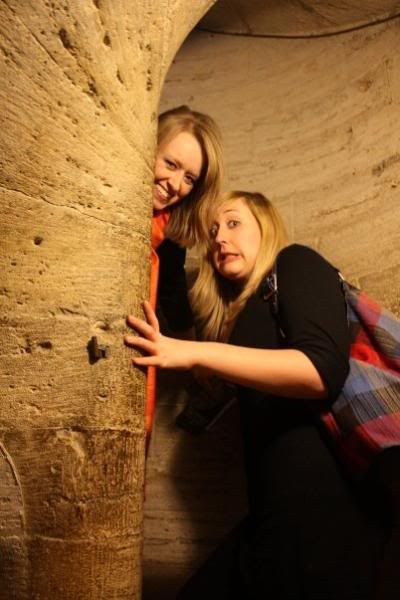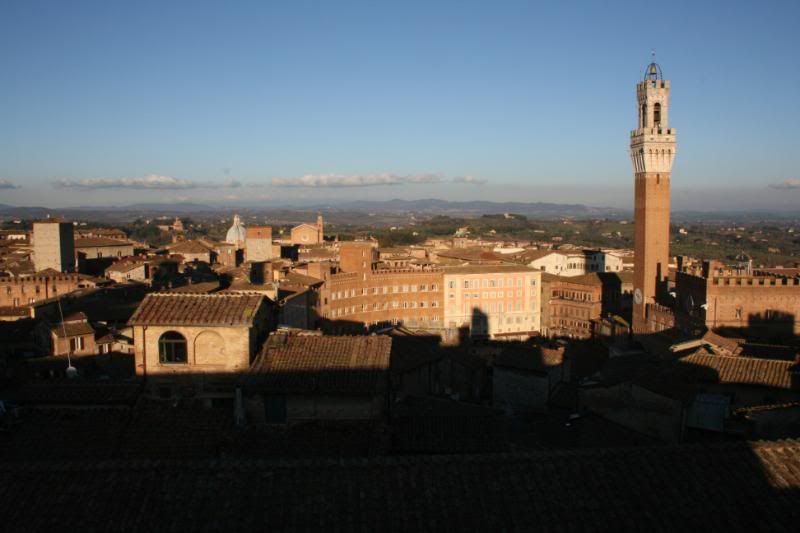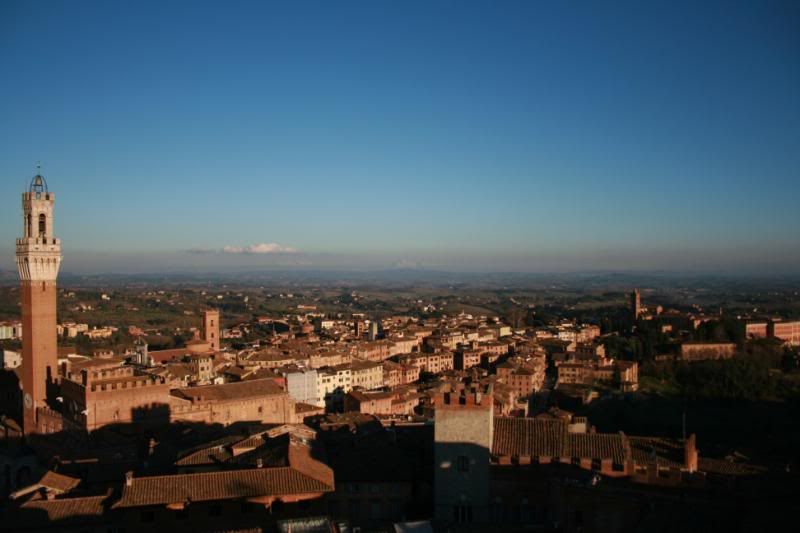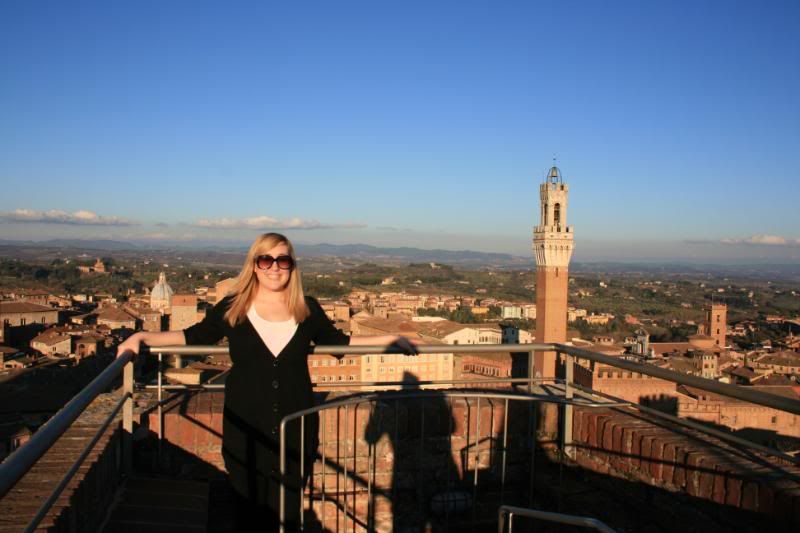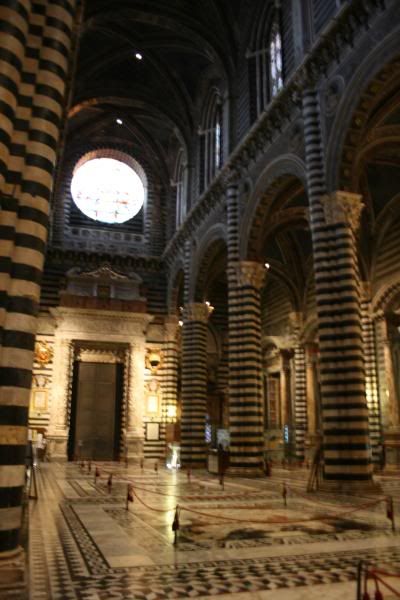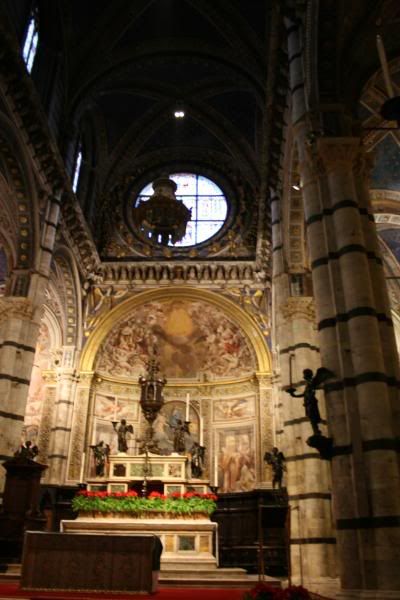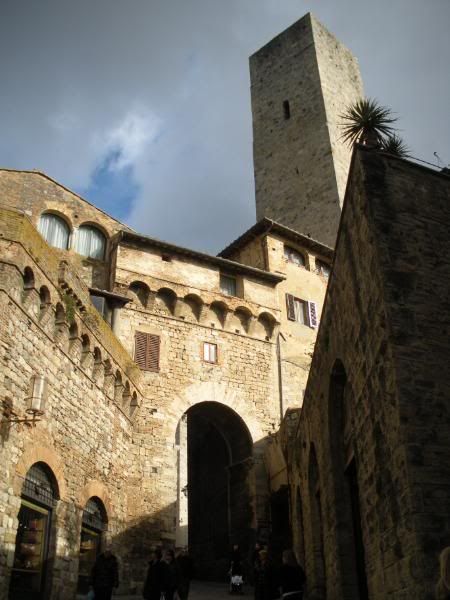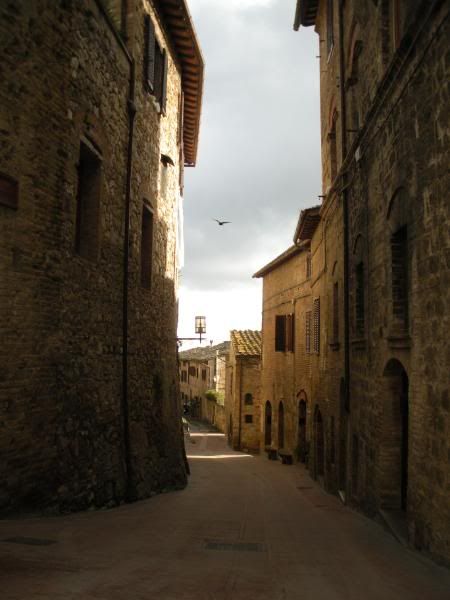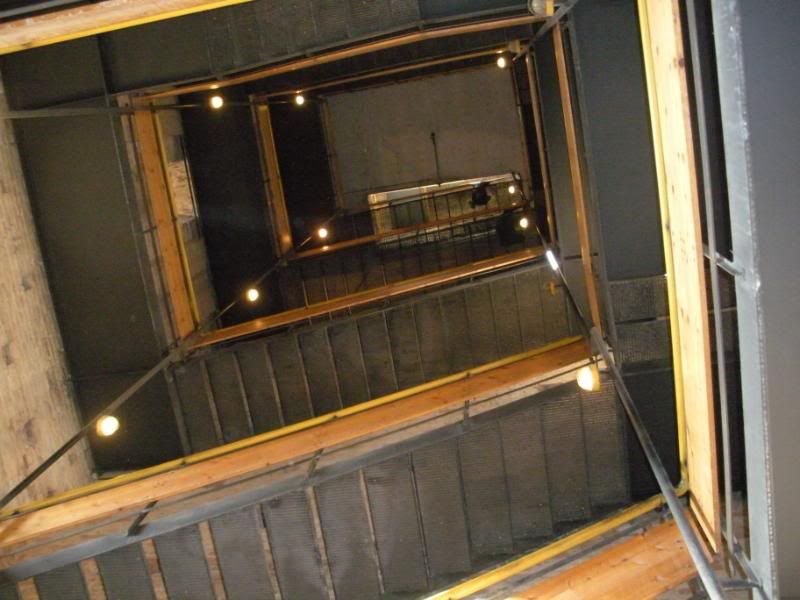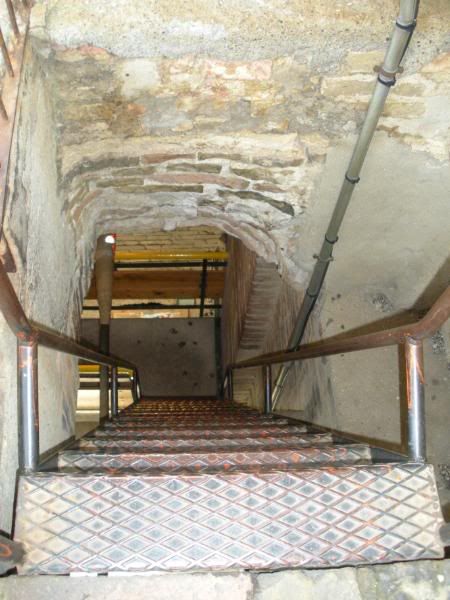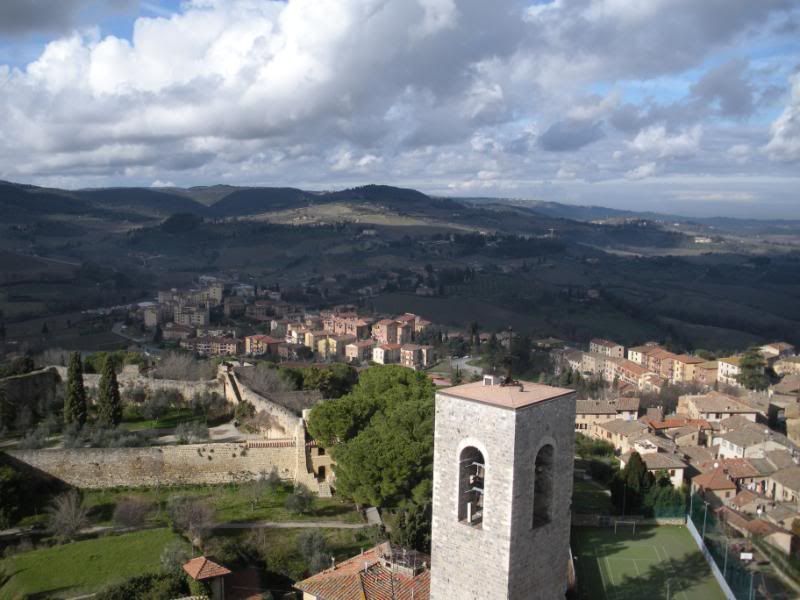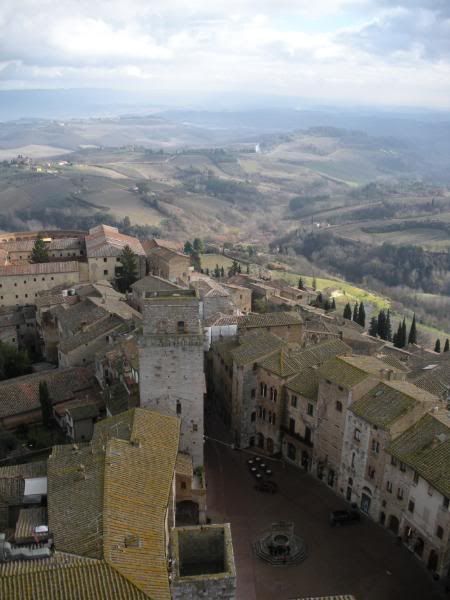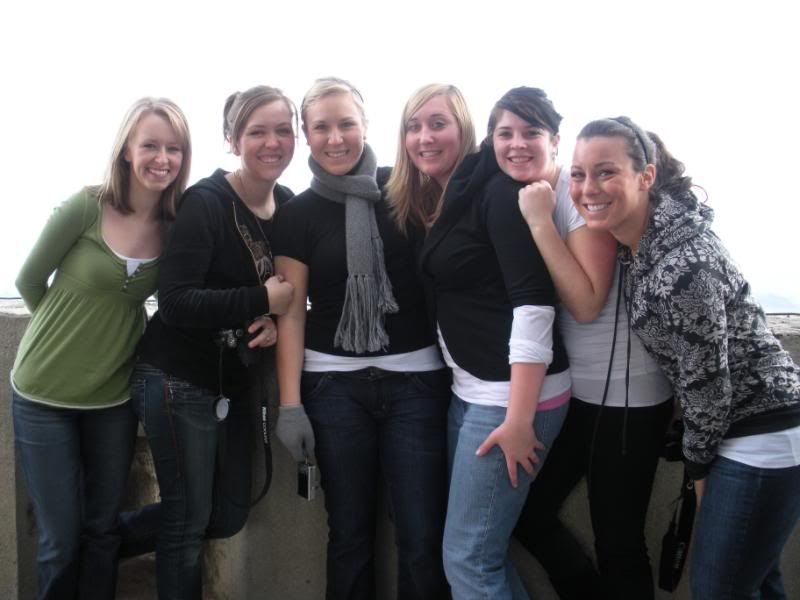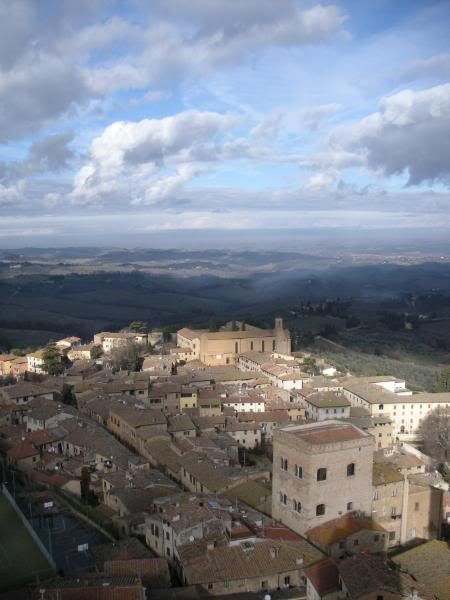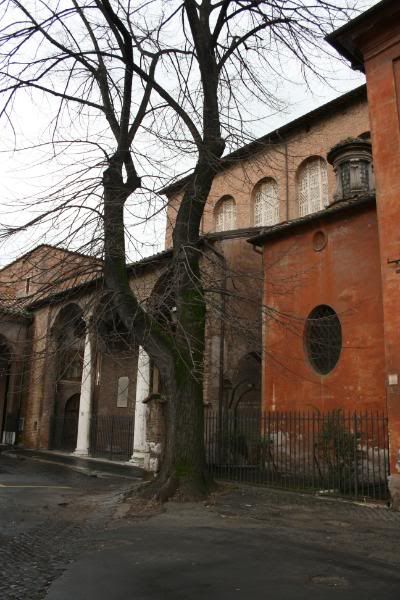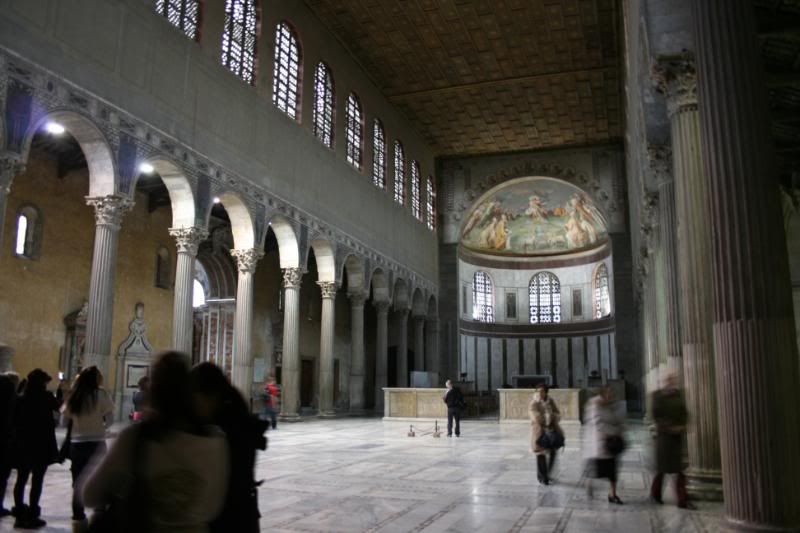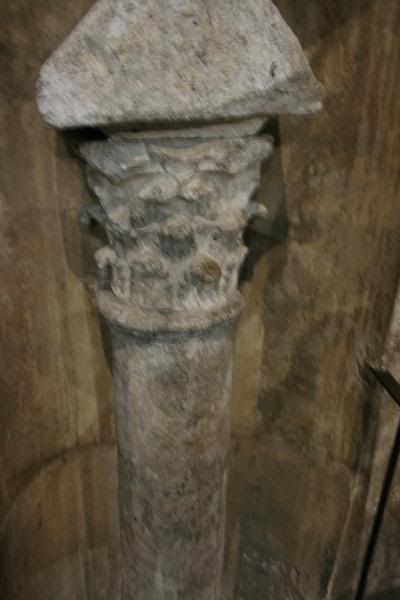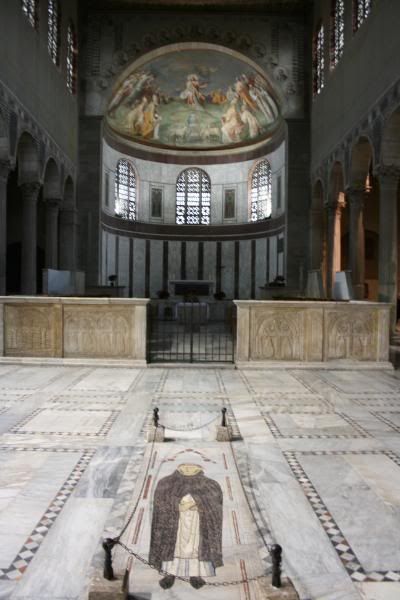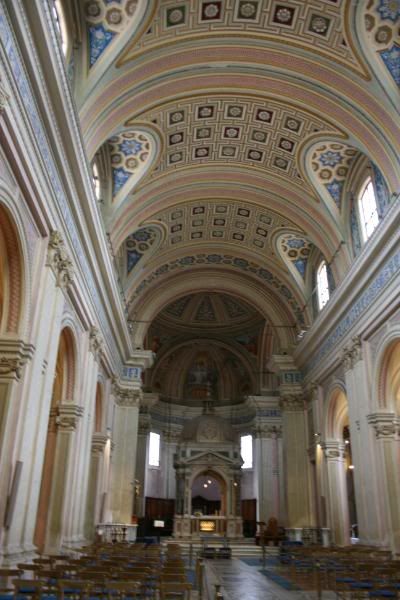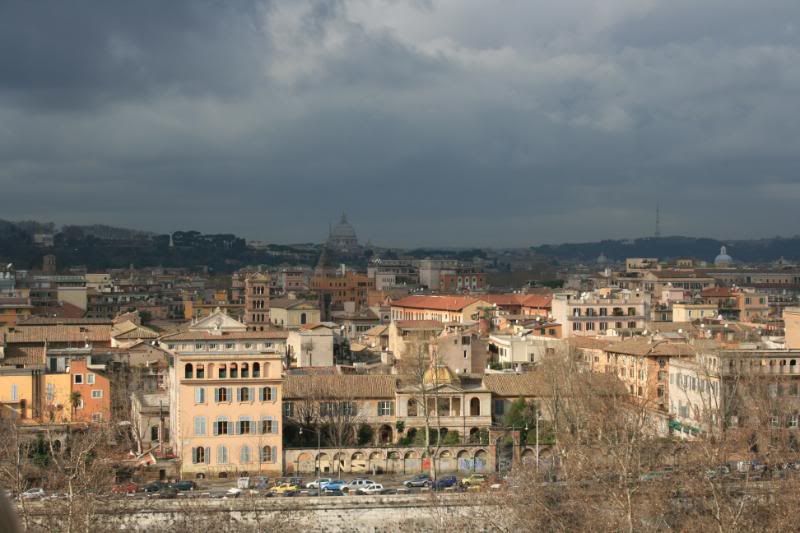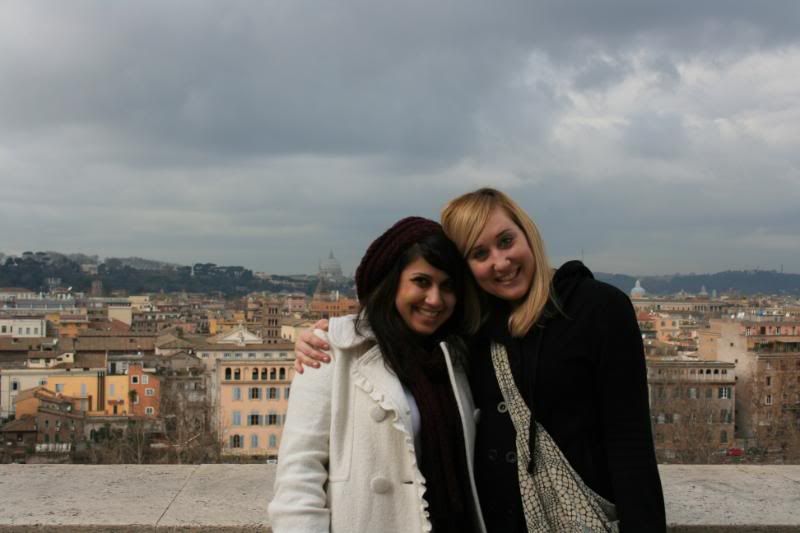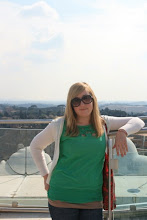This week was Vatican week! We visited St. Peter's Basilica, the Castel Sant'Angelo, and the Vatican museums. Needless to say, I was overwhelmed with the amazing art and architecture. It was raining really hard the day we went to St. Peter's, so I didn't get any good pictures of the basilica and the piazza, but here is an overview in case you're not familiar with the building:
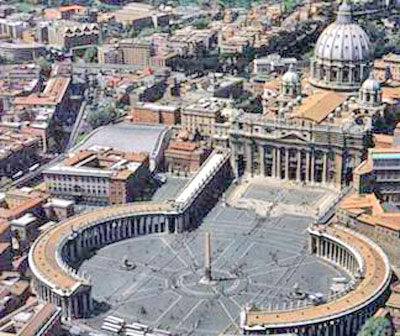
The original St. Peter's was built between 326 and 333 AD by Constantine, the Roman Empire's first Christian emperor. It is the place where St. Peter (your patron saint dad :) !) was martyred and buried. The St. Peter's as we know it today was constructed under Pope Julius II, beginning in 1506. It took 120 years and 30 popes to finish! The basilica was designed by Bramante, the dome is Michelangelo's, and the beautiful collonnade and piazza was designed by Bernini. Although I knew from numerous art history and architecture classes that it is the largest Christian church in the world, the immensity of the basilica is amazing. Here are some pictures from inside St. Peter's:
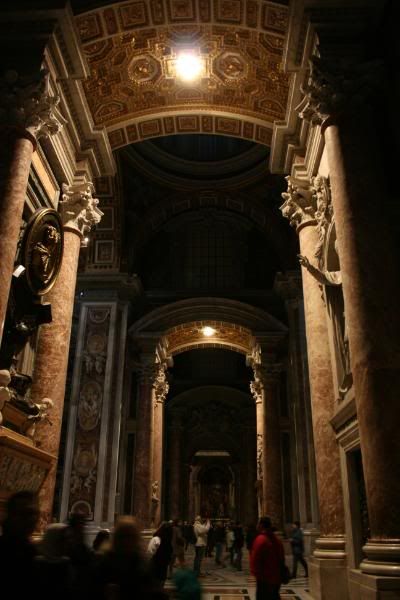
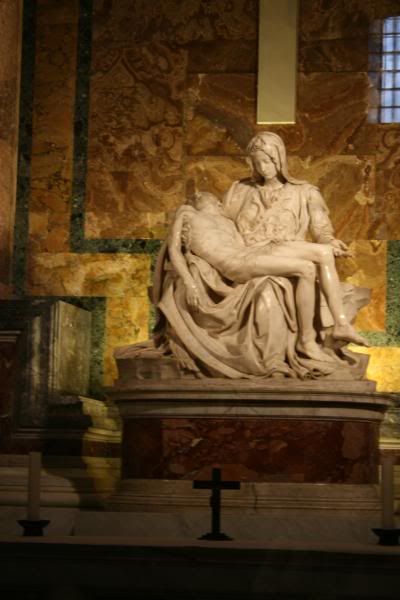
Michelangelo's Pieta!!!!!

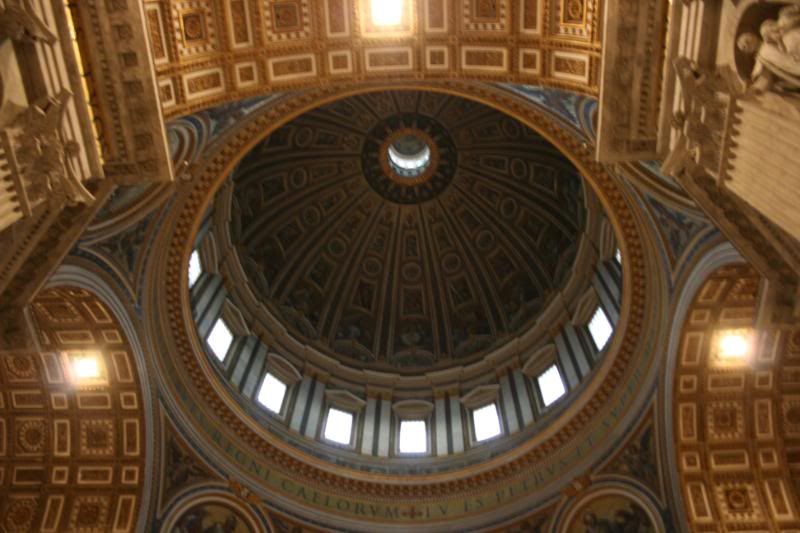
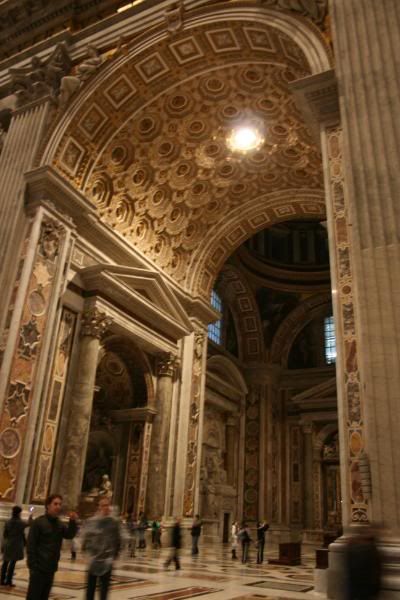
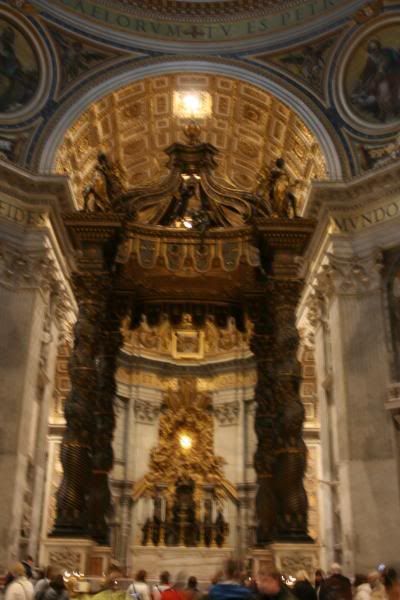
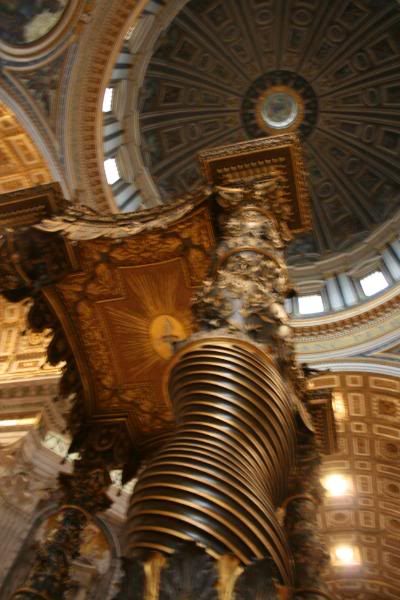
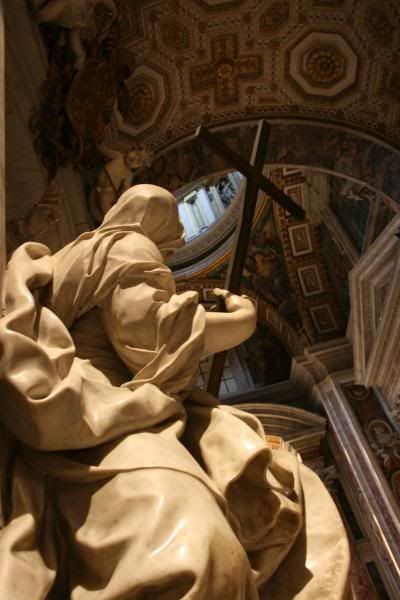
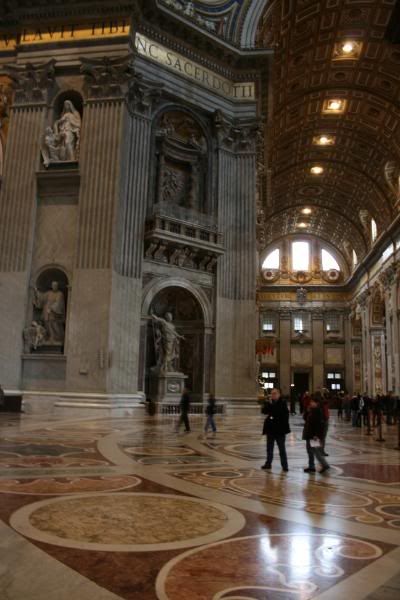
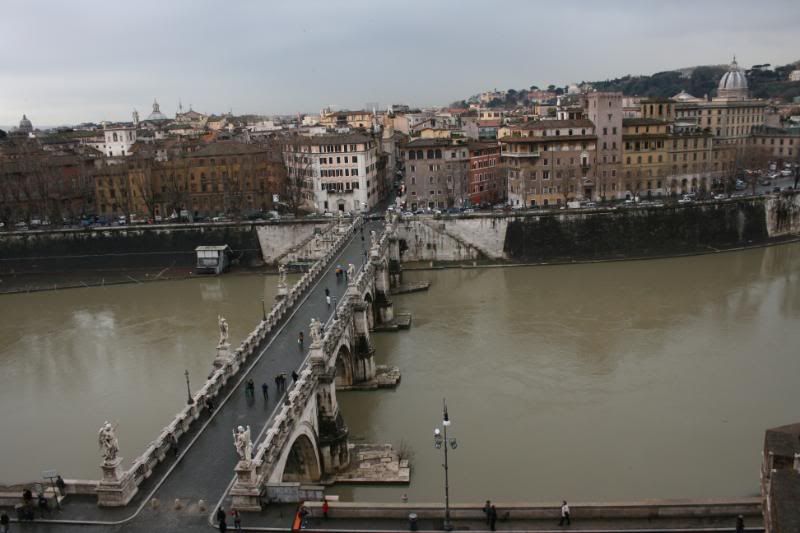
view of the Ponte Sant'Angelo from the Castel Sant'Angelo. The statues on the bridge were done by Bernini.
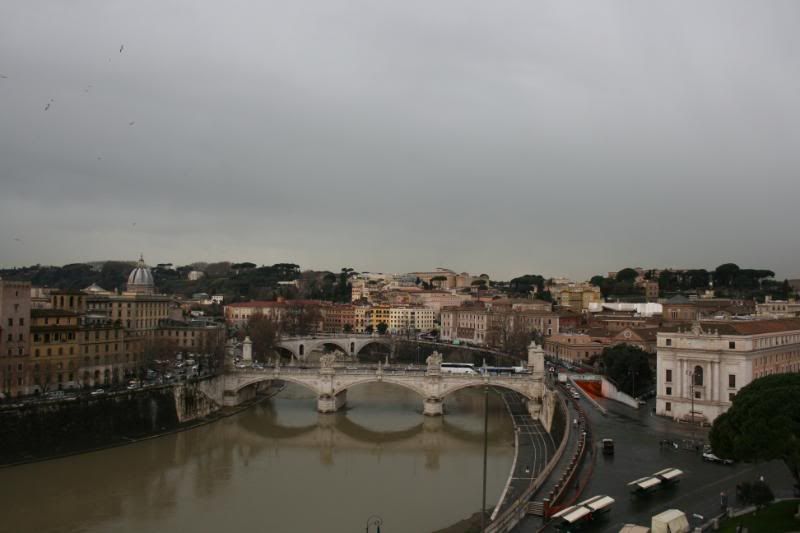
Roma!
Probably my favorite part of the Vatican visits were the museums. There are tons of very famous works of art housed in these museums that I have studied, and I was very excited to finally see them!
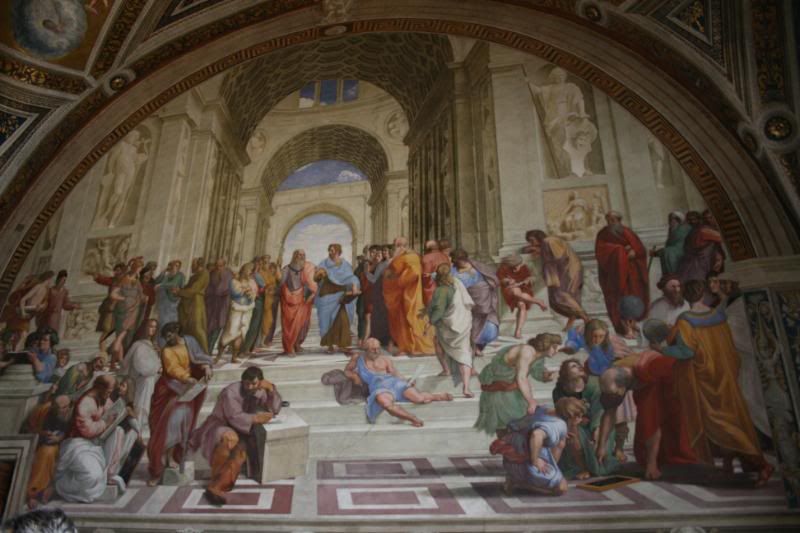
Raphael's School of Athens
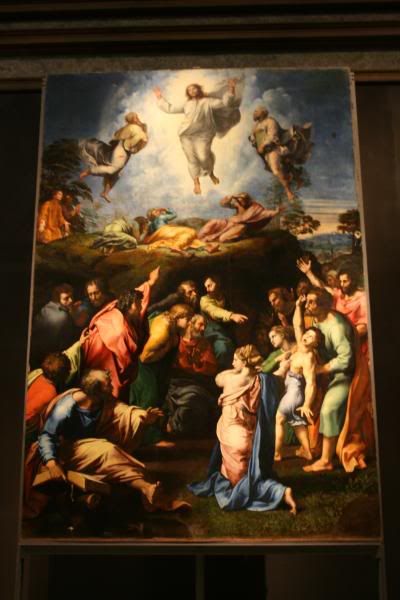
Raphael's Transfiguration
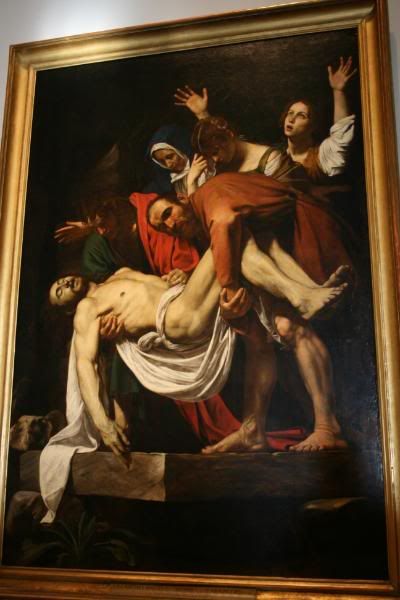
Caravaggio's Deposition of Christ. I wrote an art history paper on this painting!
And, of course, what I was most excited to see......THE SISTINE CHAPEL! (we weren't supposed to take pictures...shhhhhhhh)
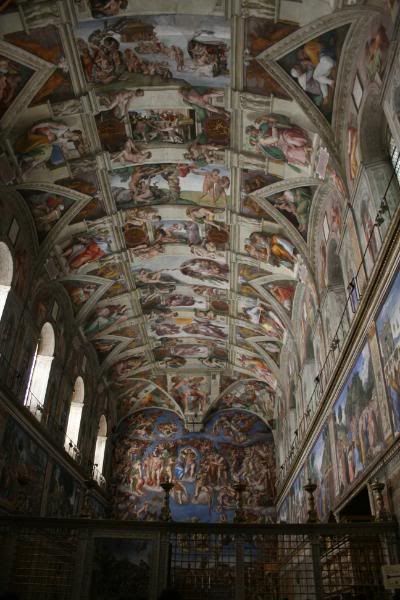
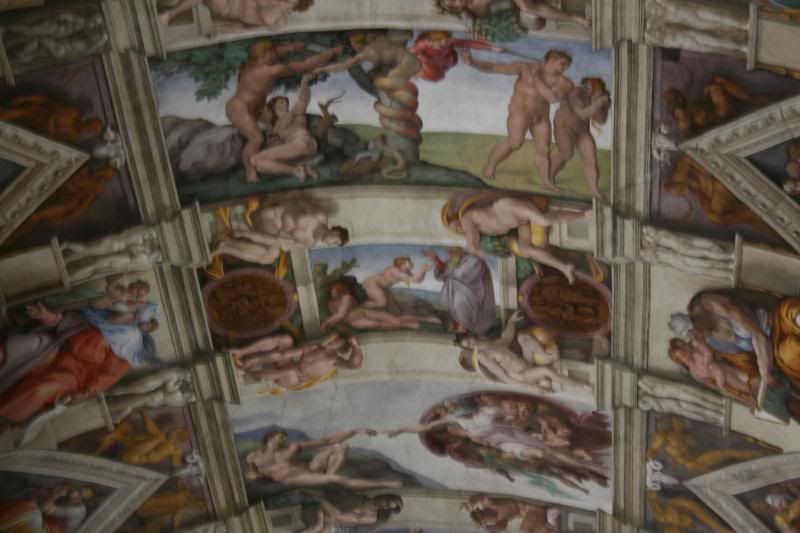
Close-up of the Creation of Adam, the Creation of Eve, and Original Sin and Banishment from the Garden of Eden.
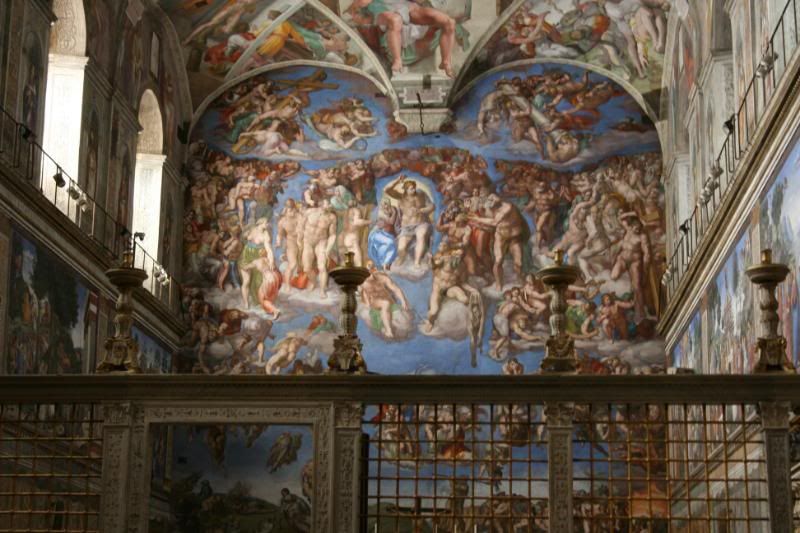
close-up of The Last Judgement
Michelangelo was commissioned by Pope Julius II in 1508 to paint the ceiling of the chapel and it took him four years to complete. Because he always considered himself primarily a sculptor, Michelangelo very much disliked the notion of having to paint the ceiling, especially since the fresco was a medium he was not familiar with. However, fueled by artistic rivalries and pure egotism he decided to outdo any fresco ever done...and he certainly did! The Last Judgement, located at the altar of the chapel, was painted by Michelangelo between 1535-1541, after the sack of Rome. Michelangelo painted himself as St. Bartholomew holding his flayed skin...pretty morbid! The chapel was one of the most amazing things I have ever seen.
After the museum visit yesterday, most of the group left for a weekend trip to Barcelona. Sam, Ashley-Rose, Reese (one of the boys in our group) and I met up with Profe around 7:30 and had dinner at Trattoria Moderna (Profe had pointed this place out to me as one of his favorites and I have been dying to go). I wasn't super hungry when we got there so I just got an appetizer (tuna carpaccio with cherry tomatoes, rocket, and parmesean) and a mixed salad, but it was delicious!
Tonight, Sam, A-Rose, and I are going out with the few CHIDlets that are still in Rome. Should be pretty fun!!
Ciao!
---------------------------------------------------------------------------------------
P.S. I just found the art history paper I referenced earlier, written about Caravaggio's Deposition of Christ and contrasting it with one painted by Raphael. If you are interested... read on!
Here are two links to larger images of the paintings for reference.
Click for the Caravaggio
Click for the Raphael
The entombment of Christ, or the burial of his body after the crucifixion, is a popular scene in Renaissance painting. However, each artist’s interpretation of the event differs greatly. The descriptions in the various books of the Bible are very vague, allowing artists to vary in style and be influenced by the social, political, and religious atmosphere of their particular time period. While both Raphael and Caravaggio chose to portray Christ’s entombment, the conscious choices of formal elements in each painting convey very different emotions. Caravaggio’s specific use of composition, color, and light suggests much more sadness and pain than Raphael’s depiction, echoing the shift from the high Renaissance Neo-Platonic ideal to the later Mannerist period of the 16th century.
The composition of each painting is the most obvious reflection of mood. In Raphael’s depiction the figures are balanced on both sides in groups of five. The rocks on the left, alluding to the tomb in which Christ is to be lain, and the hills on the right, with the cross on which Christ was just crucified looming in the distance, come together in the center to form a “V.” This draws the eye down through the composition to the figure of Christ, whose own body takes on a relaxed “V” shape. The balanced shape of the composition reflects the overall serene nature of the painting: the perfection in the “V” shape reflects the perfection of God so highly valued during the time period in which Raphael painted his version. Perfection is also seen in figure of Christ. His pose is relaxed, with no sign of previous exertion in his body or face. It is as if he is depicted as being above pain and suffering. The details in the background also reflect this ideal. The gently rolling hills and tranquil blue sky filled with fluffy clouds creates a cheerful landscape which, upon close inspection, might appear odd juxtaposed against the death of Christ. In addition, the details of the landscape give the viewer somewhere else to look: while the general composition of the painting puts emphasis on the most important part, the eye is not forced to focus solely on the body of Christ. This separates the viewer from the tragic event, preventing too much emotion or attachment to be felt. Serenity is even reflected in the almost passive expressions of the surrounding figures. These ideas run parallel to the Neo-Platonic ideals of the time period, where stoicism was highly regarded.
In stark comparison, the composition of Caravaggio’s version is very asymmetrical. Yet, it still clearly draws the eye to the subject of the painting. The figures are arranged from the very top right down an implied diagonal line to the Christ figure, with the gestures and poses of the figures helping to advance the eye. There is no balance in the picture, with the bodies of the figures contorting and hunched over, straining under the weight of Christ or expressing grief over their loss. Even the body of Christ, elongated and emaciated with protruding ribs and muscles shows evidence of his recent struggle. All of the emotion conveyed in this painting is characteristic of Mannerism, which is indicative of the reformations going on in the church during Caravaggio’s time, and the desire to portray Christ as more human.
The use of color between the two paintings also differs extremely. In Raphael’s painting, the pallet is made up of mostly primary colors with green as an intermediary. The colors are bright and even, and balanced on both sides. The color red is displayed on the figures directly surrounding Christ to highlight his position in the painting. The overall visual quality of the painting is peaceful, and doesn’t demand any immediate attention on any one section. The balance and similarity of colors throughout, like the balance of the composition, echoes the emotion meant to be expressed by the artist, or, more specifically, the lack of emotion. Caravaggio’s painting deviates from the old Renaissance ideal. The colors are subdued and much darker, with the pallet ranging through various hues of red, black, brown. The lightest colors are reserved for the body of Christ, and even the cloth around him is whiter than the white of the figures in the background, disparities that are meant to draw the eye to the subject of the painting. The similarity, darkness, and dreariness of color in Caravaggio’s painting illustrates the somber mood intended.
Probably the most contrasting element between Caravaggio and Raphael’s paintings is the use of light. In Raphael’s depiction, the light source is evenly distributed over the whole picture, emphasizing the brightness of color and allowing the eye to rove around the composition. In Caravaggio’s painting, however, the light source is clearly focused on the figure of Christ and his immediate surroundings. The black background serves to distinguish the light source, but also forces the eye to focus on the figure of Christ. Unlike Raphael’s painting, there is nothing in the background to distract from the subject. The strident contrast between the background and the brightest part of the painting (the figure of Christ) is typical of Mannerism, and serves to give the viewer no escape from the evident emotion displayed in the foreground. Also apparent in Caravaggio’s composition is the fact that the figures fade into the black background, forcing the viewer to fill in the rest of the composition in their imagination. The disappearance of the figures into the dark adds to the overall somber feeling of the painting, giving it an even more morbid appearance. This is not apparent in the Raphael, where the light and shadows are balanced through the whole painting, both foreground and background.
While both Raphael and Caravaggio chose to paint the same subject, it is evident in their use of formal elements that they chose to portray the subject in two very distinct ways. Raphael adheres strictly to the Florentine Neo-Platonic ideal of reflecting God’s perfection in paintings and preaching stoicism as a way to achieve nearness with God. Caravaggio almost a hundred years later, due to changes in values in the church, depicts the vivid emotion and pain associated with the death of Christ, who was to be viewed as a more human figure.

